
PPT Marzano’s SixStep Vocabulary Process for English Language Learners PowerPoint
Marzano Strategies. Robert J. Marzano is co-founder and CEO of Marzano Research Laboratory in Englewood, Colorado. A leading researcher in education, he is a speaker, a trainer, and an author of more that 30 books and 150 articles on topics such as instruction, assessment, writing, and implementing standards.
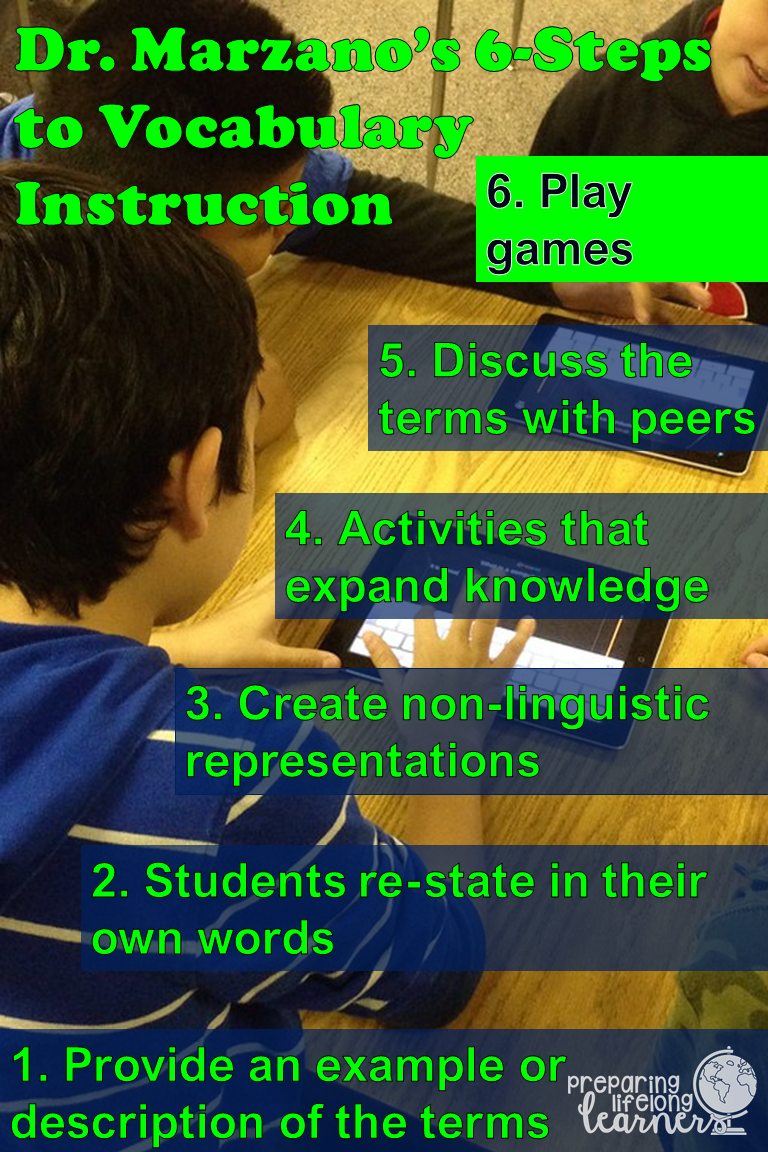
Marzano's 6 Steps to Vocabulary Instruction 6 Games! PREPARING LIFELONG LEARNERS
Ask students to construct a picture, symbol, or graphic representing the word. Model, model, model. Provide examples of student's drawings (and your own) that are rough but represent the ideas. Play "Pictionary". Draw an example of the term. Dramatize the term using speech bubbles. Let them find a picture on the internet, if necessary.

Marzano’S Six Steps For Teaching Vocabulary
Marzano's Six Step Process Teaching Academic Vocabulary from Building Background Knowledge for Academic Achievement By Robert Marzano (2004) Introducing the Term: Step 1: Explain-Provide a description, explanation, or example of the new term.(Include a non-linguistic representation of the term for ESL kids.)
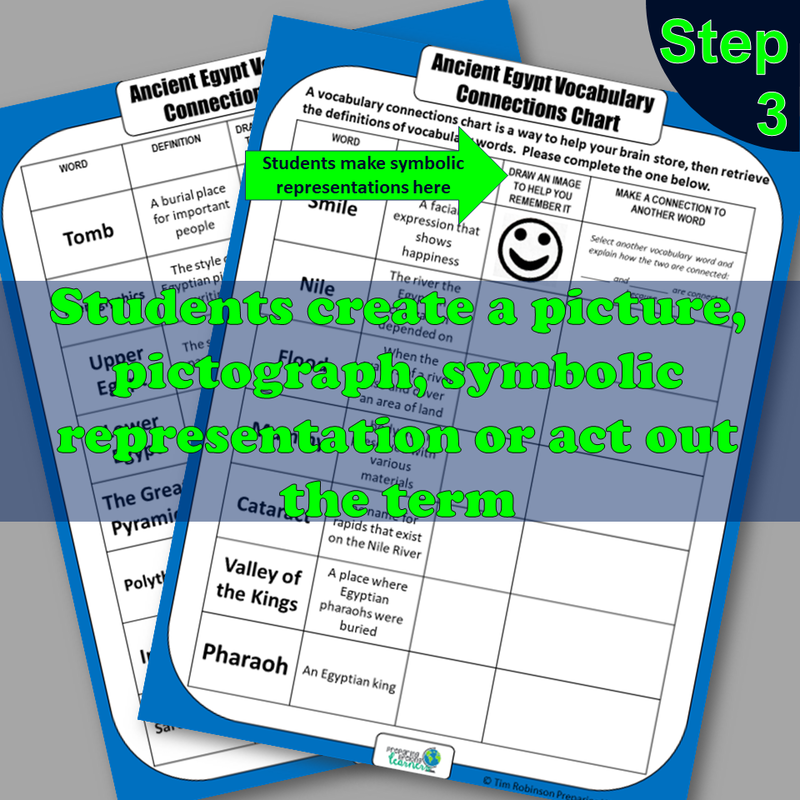
Marzano's 6 Steps of Vocabulary Instruction 3 NonLinguistic Representations PREPARING
In Building Background Knowledge, Bobbi Marzano arranged out a six-step process for making academic vocabulary. It includes direct how, linguistic and nonlinguistic definitions, recording talk learning stylish a notebook other journal, speaking about terms, press playing with speech. More exposures are at the focus concerning and process.
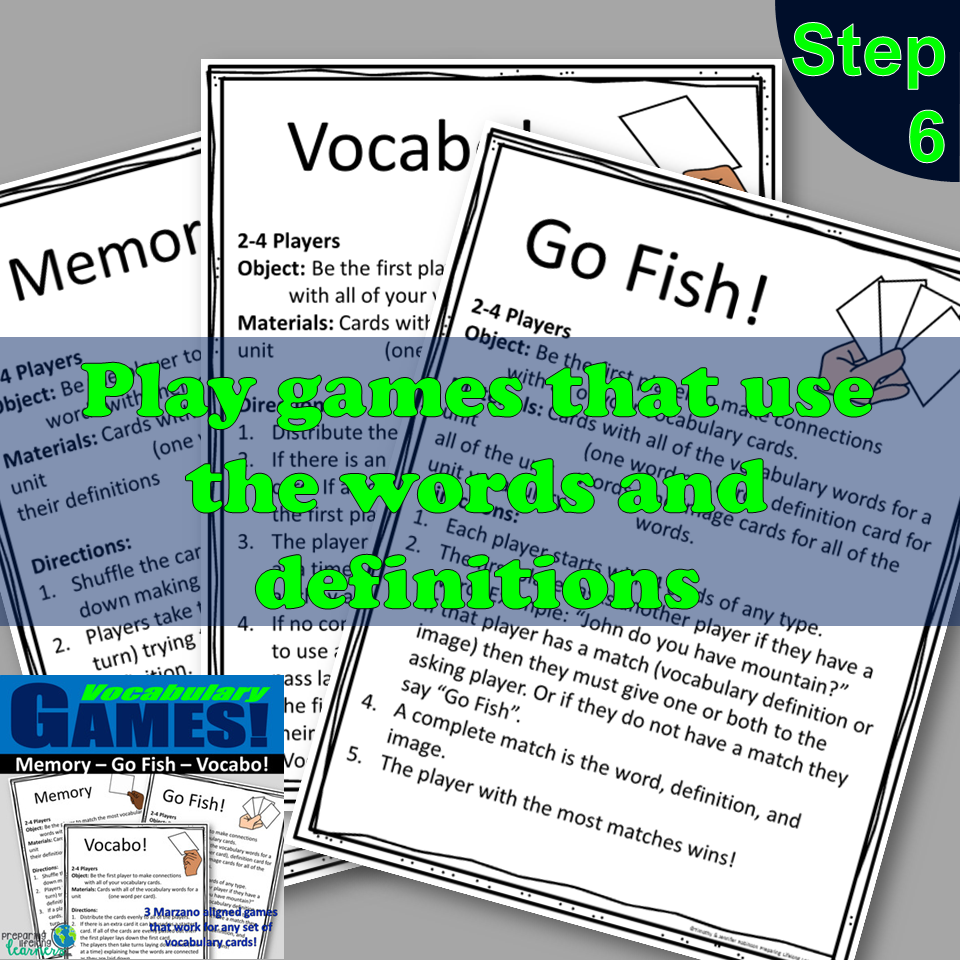
Marzano's 6 Steps to Vocabulary Instruction 6 Games! PREPARING LIFELONG LEARNERS
2. Students restate or explain the new word in their own words. 3. Students create a nonlinguistic representation of the word. Students can right-click on any word (control-click on the Mac) and have the option of running an Internet search or image search to find visual or representational evidence of a word. 4.
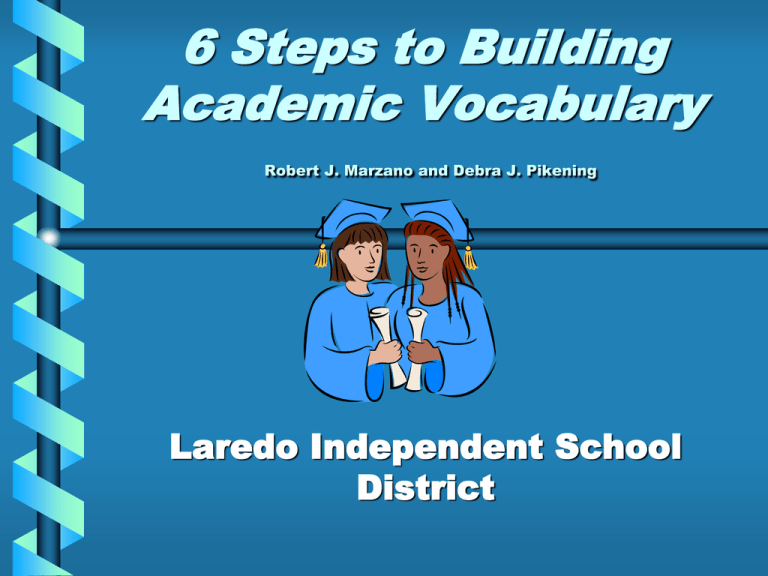
Marzano`s 6 Steps
Fortunately, Dr. Marzano did all the research for us and created his 6 Steps of Vocabulary Instruction! Have students re-state the description, explanation or example in their own words. Have students produce a picture, pictograph, some other non-linguistic representation or act out the term. Extend and refine your students' understanding of.

Marzano's 6 Steps for Vocabulary Acquisition Part 2 YouTube
Educational Leadership is pleased to announce a new column this year—The Art and Science of Teaching—and a new columnist—noted researcher Robert J. Marzano.Internationally known for his practical translations of current research into effective classroom strategies, Marzano is cofounder of Marzano Research Laboratory, which synthesizes teacher research into components that schools can use.

fhsdvocabulary [licensed for use only] / Francis Howell Vocabulary Instruction
step where teachers revisit terms with activities that help students add to their knowledge of the new words. PLAY. step that involves students in games that enable them to play with terms. background knowledge. the experiences, understandings, and vocabulary that learners walk in with. recursive.

Vocabulary Instructional Strategies Marzano’s 6Step Process Literacy Pinterest
Marzano's Six-Step Process for Teaching Vocabulary (with examples) 1 - Explain Provide a student-friendly description, explanation, or example of the new term (include a non-linguistic representation of the term). Looking up words in dictionaries is not useful for teaching vocab Provide a context for the term

PPT Academic Vocabulary Instruction for ELLs PowerPoint Presentation ID692720
Marzano's Six Step Process for Teaching Academic Vocabulary. Marzano - Six Step Overview. Marzano - Six Step (pages two and three) Robert Marzano - Vocabulary for CCSS (ELA and MA; Tiers 2 and 3) - Basic Vocabulary Terms. - Vocabulary for NGSS.
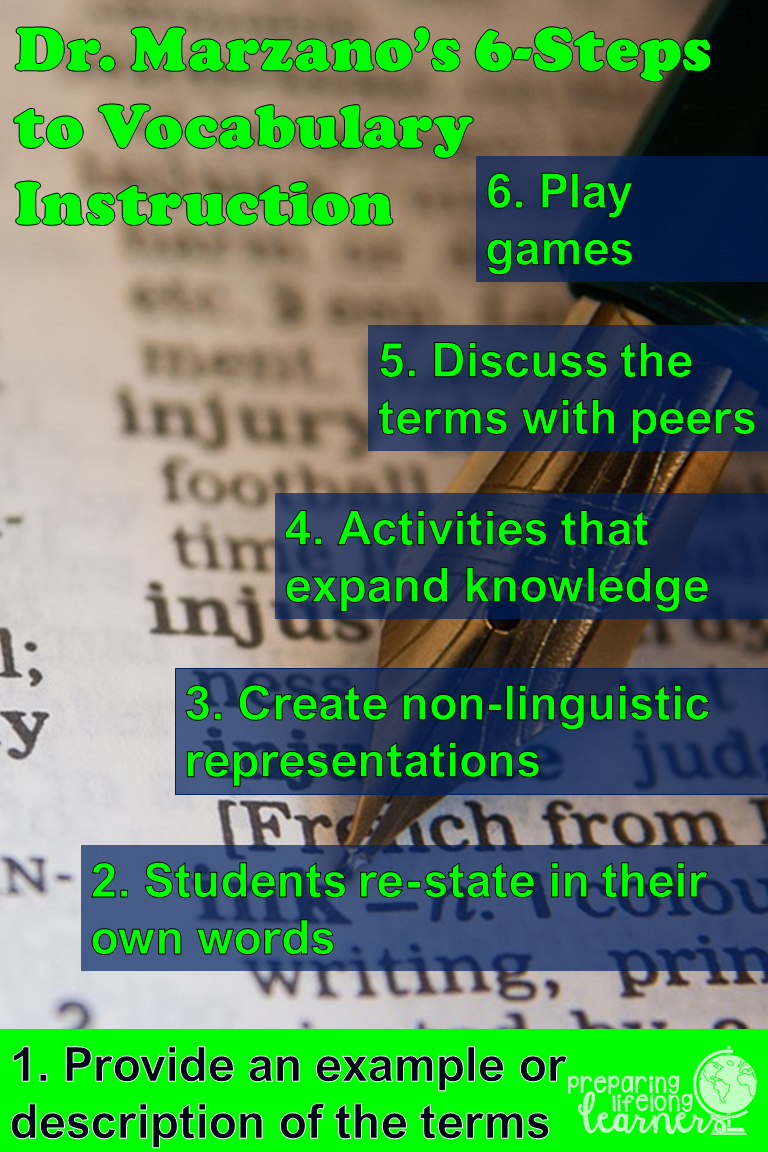
Marzano's 6 Steps To Vocabulary Instruction 1 Provide a Definition, Description or Explanation
In Building Background Knowledge, Bob Marzano laid out a six-step process for building academic vocabulary. It includes direct instruction, linguistic and nonlinguistic definitions, recording word learning in a notebook or journal, talking about words, and playing with words. Multiple exposures are at the heart of the process.

Marzano's 6step Process for Building Academic Vocabulary from
Plan for direct vocab. instruction: (Marzano's 6 Steps for Teaching Vocab.) 1. YOU provide a description, explanation or example. (story, sketch, powerpoint) 2. Ask students to re-state or re-explain meaning in their own words. (journal, community circle, turn to your neighbor) 3. Ask students to construct a picture, graphic, or symbol for.
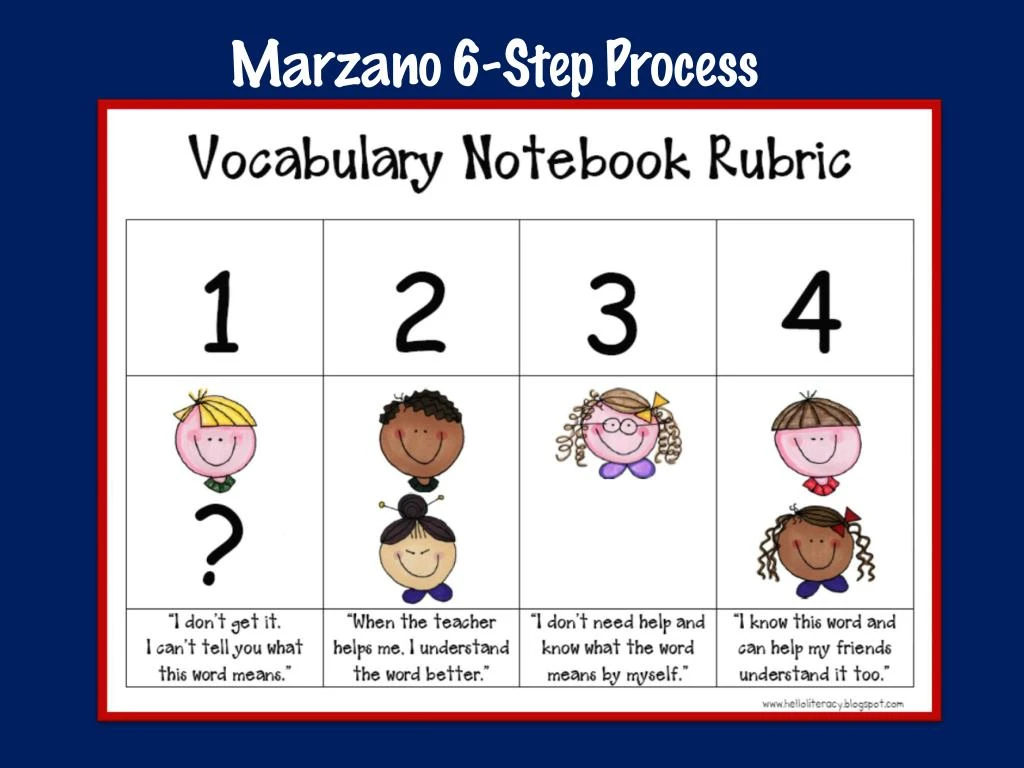
Marzano Vocabulary Graphic Organizers [] New Concept
2 T he importance of vocabulary knowledge to reading and general literacy has been recognized for decades. Additionally, years of research and theory have provided rather clear guidance

PPT Building Background Knowledge SIOP Component 2 PowerPoint Presentation ID6888468
Plan for direct vocab. instruction: (Marzano's 6 Steps for Teaching Vocab.) YOU provide a description, explanation or example. (story, sketch, powerpoint) Ask students to re-state or re-explain meaning in their own words. (journal, community circle, turn to your neighbor) Ask students to construct a picture, graphic, or symbol for each word.
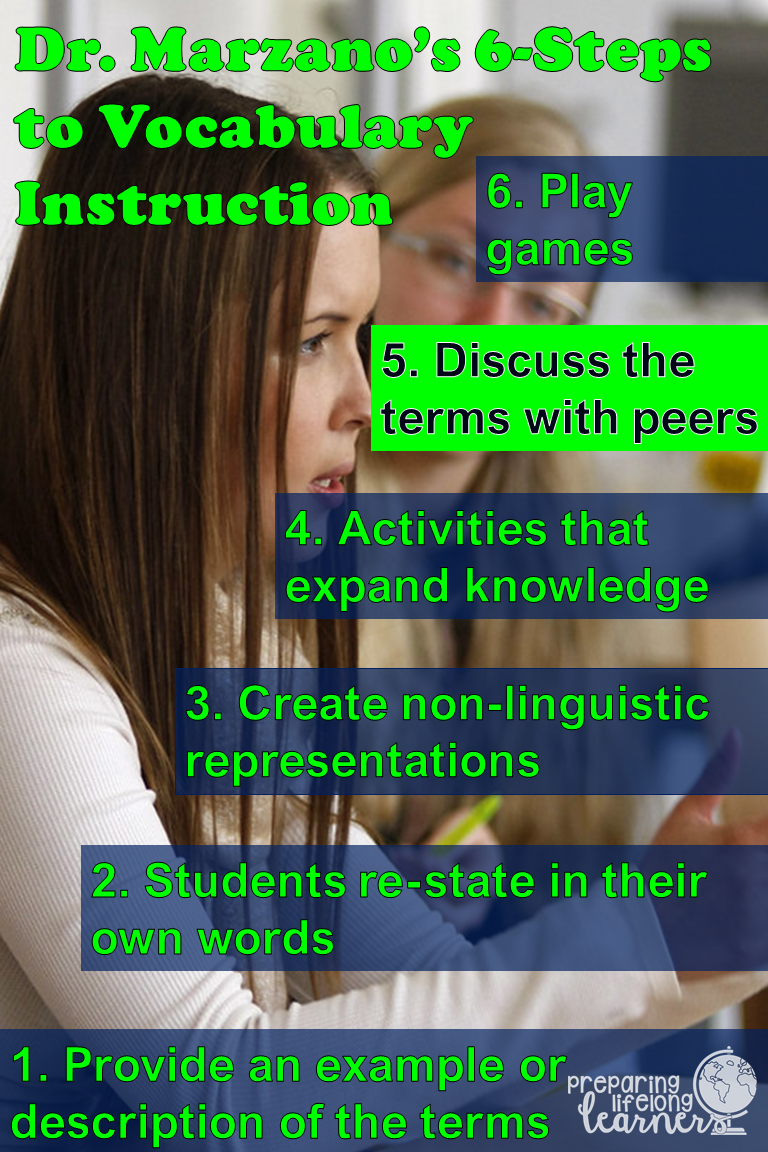
Marzano's 6 Steps to Vocabulary Instruction 5 Ask students to Discuss Terms with Each Other
Direct vocabulary instruction can be implemented using a research-based six-step process. The six steps of the vocabulary instruction process are: Provide a description, explanation, or example of the new term. Ask students to restate the description, explanation, or example in their own words. Ask students to construct a picture, symbol, or.

reaganENG09 Vocabulary Lessons
Marzano's 6-Step Approach's first step stresses how crucial it is to introduce new terms with a precise description, explanation, or example. The basis for successful vocabulary acquisition is laid at this early stage. Introducing a new term with an interactive word map is the best way. Instructors and learners can explain in their own.